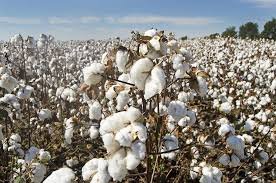
Pakistan’s cotton sector — once the backbone of its textile-driven economy — is facing an unprecedented crisis.
From shrinking acreage to climate-induced disasters and pest infestations, the country’s cotton production is projected to hit record lows in 2025. Yet, amidst this gloomy outlook, a breakthrough in seed technology may offer a glimmer of hope for farmers and the textile industry alike.
Historic Decline in Acreage and Output
Recent data reveals that cotton acreage nationwide has declined by 7.5 percent, with Sindh bearing the steepest drop. According to the Pakistan Cotton Ginners Association (PCGA), overall production estimates have been revised downward to 4.8 million bales for 2025, nearly 4 percent less than last year. Some experts, including Dr. Yusuf Zafar, Vice President of the Pakistan Central Cotton Committee (PCCC), place the figure even lower at 4.35 million bales.
Both estimates represent the lowest levels in Pakistan’s history, a stark contrast to the record-high 14.8 million bales achieved in 2011-12. In just over a decade, output has plummeted by nearly 70 percent. Last year’s crop, at 5.6 million bales, was already the lowest in three decades — and the current season threatens to dip further.
Climate Change and Other Challenges
Behind these numbers lies a combination of systemic and climate-driven challenges. Heat waves, erratic rains, floods, and water shortages have put immense pressure on cotton cultivation. The cotton curl leaf virus and pink bollworm infestations have further ravaged crops, while declining use of fertilizers — particularly phosphorus, Sulphate of Potash (SOP), and nitrogen-based varieties — has compounded the problem.
According to Sajid Mahmood, Head of Technology Transfer at the Central Cotton Research Institute Multan, early fruiting looked promising this year, but June–July heat waves and water scarcity caused fruit shedding and stunted growth. Subsequent floods worsened the situation, submerging cotton fields across Punjab and Sindh.
In Punjab alone, production could decline by as much as 35 percent, with over 2,100 villages losing crops worth billions of rupees. Key cotton-growing districts such as Pakpattan, Vehari, Bahawalnagar, Bahawalpur, and Rajanpur have suffered massive damage. Meanwhile, Sindh managed to achieve only 65 percent of its sowing target due to water shortages, affecting both yield and quality.
Ginning Factories and Market Signals
Despite poor crop conditions, ginning activity has shown relative improvement. This year, 299 ginning factories are operational compared to 272 last year, with Punjab accounting for most of the increase. Stock levels have surged to 200,700 bales, up from just 53,564 bales at the same point last year, reflecting stronger early arrivals. However, deliveries to textile mills dropped by 3.16 percent compared to last year, signaling weaker downstream supply.
Triple-Gene Cotton Seed: A Potential Game-Changer
Amid this crisis, innovation is emerging as a critical factor. Pakistani agribusiness company Four Brothers has introduced a new triple-gene cotton seed, designed to boost yields and withstand the pressures of climate change. The seed claims resilience against heat stress, water scarcity, and pest infestations — three of the most critical challenges facing farmers today.
Industry insiders believe this innovation could provide a lifeline to farmers struggling with declining productivity. If scaled effectively, the seed could enhance per-acre yields, stabilize national production, and help Pakistan’s textile sector — which relies on cotton as its primary raw material — regain competitiveness in global markets.
Institutional and Policy Bottlenecks
However, experts caution that seed technology alone cannot rescue the sector. Delays in policy and institutional reforms remain a stumbling block. The merger of PCCC and the Pakistan Agricultural Research Council (PARC), mandated for completion by June 30, 2025, is still pending. At the same time, textile mills have failed to pay outstanding cotton cess dues under their July 2025 agreement with the government, depriving research institutions of much-needed funds.
Without addressing these governance gaps, research activities — including trials and scaling of climate-resilient seeds — will remain underfunded and fragmented.
Looking Ahead
The road ahead for Pakistan’s cotton sector is challenging but not without opportunities. Experts suggest that by learning from this year’s devastation, strengthening climate adaptation strategies, and adopting resilient seed varieties, Pakistan can gradually recover its cotton output. Early sowing in Punjab, which yielded 20 maunds of phutti per acre, shows that better planning and timely interventions can deliver results.
Still, the threat of climate-induced floods and heat waves looms large. Unless the government, researchers, and industry collaborate to promote innovations like the triple-gene seed, ensure timely fertilizer supply, and strengthen irrigation infrastructure, Pakistan risks further erosion of its cotton economy — with direct consequences for its textile exports and rural livelihoods.
In short, Pakistan’s cotton stands at a crossroads: a fragile present weighed down by climate shocks, and a hopeful future pinned on innovation and reform. – ER News Desk
